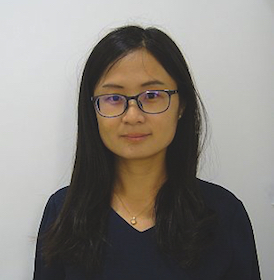New IARC study on global expansion in overdiagnosis of thyroid cancer
Dr Salvatore Vaccarella and Dr MengMeng Li of the Section of Cancer Surveillance at IARC describe their new study on thyroid cancer incidence trends, with the objective of assessing how thyroid cancer overdiagnosis has increased in a wide range of countries worldwide.
1. Can you tell us more about the study and the data available ?
We investigated the evolution of thyroid cancer incidence trends in 26 high- and middle-income countries on four continents, to estimate the impact of overdiagnosis. The study used the most up-to-date, high-quality data from population-based cancer registries included in the IARC Cancer Incidence in Five Continents database.
We found that thyroid cancer incidence continued to increase from 1998–2002 to 2008–2012 in all high-income countries, and the same trend was observed in several densely populated middle-income countries undergoing rapid socioeconomic transition. We estimated that these unfavourable trends were driven largely by overdiagnosis.
2. What are the countries or regions most affected? Can you illustrate the results of the study by sharing the situation in two or three of the most affected areas or countries?
The problem of overdiagnosis of thyroid cancer started a few decades ago in some very high-income countries, such as France, Italy, the Republic of Korea, and the USA. We now provide evidence that the phenomenon is rapidly growing also in several socioeconomically transitioning countries, including, for instance, China, Colombia, and Lithuania.
Overdiagnosis of thyroid cancer affects predominantly middle-aged people, and women more than men. In women, the proportion of thyroid cancer cases attributable to overdiagnosis in 2008–2012 ranged from approximately 40% in Thailand to more than 90% in the Republic of Korea.
Overall, more than 830 000 women and 220 000 men might have been overdiagnosed with thyroid cancer in 2008–2012 in the 26 countries analysed.
3. How can these results be explained?
The progressively increasing use of sensitive diagnostic techniques, such as ultrasonography, computed tomography (CT) scanning, and magnetic resonance imaging (MRI), in combination with changes in physicians’ practices in investigating the thyroid gland have led to the detection of a large number of subclinical cancers, which are known to exist in the thyroid gland.
Scrutiny of the thyroid gland with these diagnostic technologies is commonly offered in some countries, despite evidence that the harms far outweigh the benefits.
The large variability within geographical regions and between countries predominantly reflects local medical practices, in particular differences in the detection of indolent tumours in the thyroid.
The problem is exacerbated in settings where health-care services are predominantly private and market-based, such as in many middle-income countries undergoing socioeconomic transition.
4. Why is this a public health issue?
The impact of overdiagnosis has been so strong that it has changed the epidemiological landscape of thyroid cancer. Until a few decades ago, thyroid cancer was still considered to be a relatively rare disease, but it is now one of the most commonly diagnosed cancer types. In 2018, thyroid cancer was the fifth most common cancer in women of all ages and the third most common in women younger than 50 years.
The large majority of individuals diagnosed with thyroid cancer undergo a total thyroidectomy, which requires lifelong thyroid hormone replacement, and other harmful treatments, such as radiotherapy and lymph node dissection.
In addition to the harmful physical and psychological consequences for individuals, overdiagnosis can also lead to substantial financial costs for health-care systems, diverting resources that could otherwise be used to provide effective, affordable, and equitable medical services for all citizens, especially in limited-resource settings.
5. What could be the solution? What do you advocate to strike a balance between avoiding overdiagnosis and the need to detect dangerous tumours at an early stage?
Awareness about the magnitude of overdiagnosis and the lack of adequate evidence showing even small benefits deriving from the screening and treatment of thyroid cancer have led to important changes in international guidelines, which now explicitly recommend against screening for thyroid cancer in asymptomatic individuals.


